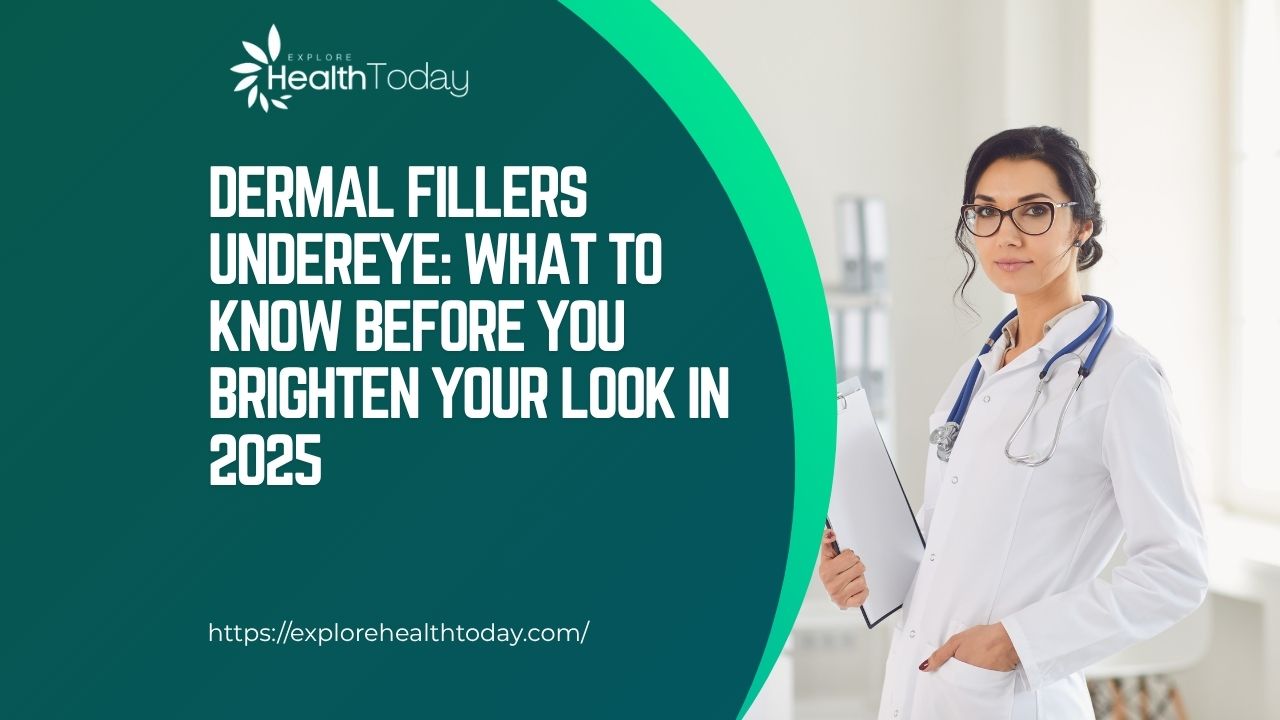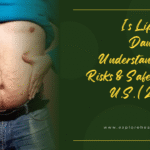Introduction: Why Undereye Fillers Are in High Demand
Tired of looking tired—even after a good night’s sleep? You’re not alone. In 2025, dermal fillers undereye procedures have become one of the fastest-growing non-surgical aesthetic treatments in the United States. Whether you’re dealing with dark circles, hollows, or a shadowed tear trough, these injectable treatments offer a fast, relatively painless solution with little downtime.
According to the American Society of Plastic Surgeons, injectable filler treatments, particularly in the delicate under-eye area, have increased by over 30% between 2020 and 2024. But just because the treatment is trendy doesn’t mean it’s right for everyone. Let’s dive into what dermal fillers under the eyes actually do, how they work, who they’re best for, and what to expect in 2025.
What Are Dermal Fillers Undereye?
Dermal fillers undereye refer to hyaluronic acid-based injectables used to add volume and smooth out the area below the eyes, typically targeting the tear trough—the hollow area that forms between the lower eyelid and upper cheek.
Popular brands used for under-eye treatments include:
- Restylane®
- Juvederm® Volbella
- Belotero Balance®
These fillers are designed to:
- Reduce the appearance of dark circles
- Minimize puffiness or hollowness
- Improve overall under-eye skin texture
The fillers work by attracting water molecules to the injection site, plumping up the area for a more youthful and refreshed look.
Who Is a Good Candidate for Undereye Fillers?
Not everyone is an ideal candidate. The best results tend to be seen in individuals who have:
- Mild to moderate under-eye hollows
- Good skin elasticity
- Minimal skin laxity or puffiness
- Realistic expectations
If you have significant fat loss, sagging skin, or medical conditions affecting skin quality, a board-certified dermatologist or plastic surgeon may recommend alternative treatments like surgery or laser resurfacing.
What to Expect During the Procedure
Getting dermal fillers undereye is a quick outpatient procedure. Here’s what you can typically expect:
Before the Injection:
- A consultation to assess your needs and facial structure
- Discussion of risks and benefits
- A topical numbing cream may be applied for comfort
During the Injection:
- A fine needle or cannula is used to inject filler
- The injector may gently massage the area for even distribution
- Entire procedure typically takes 15–30 minutes
After the Injection:
- Mild swelling or bruising is common
- Results can be seen immediately but improve over several days
- Most people return to work or daily activities the next day
Benefits of Dermal Fillers Undereye
When performed by a skilled provider, this treatment offers impressive aesthetic benefits with minimal interruption to your routine.
Top advantages include:
- Immediate results
- No general anesthesia or surgery required
- Quick recovery time
- Non-permanent (can be dissolved if needed)
- Enhanced self-confidence
Risks and Side Effects to Consider
Despite its benefits, under-eye filler is not without risks—especially because the skin here is thin, delicate, and prone to complications.
Common Side Effects:
- Swelling
- Bruising
- Tenderness
- Redness
Rare but Serious Risks:
- Lumpiness or uneven texture
- Overfilling or Tyndall effect (bluish hue)
- Infection
- Vascular occlusion (blocked blood vessel)
This is why it’s crucial to choose a qualified, board-certified injector with experience specifically in the tear trough area.
To ensure safe outcomes, always verify the credentials of your provider through the American Board of Cosmetic Surgery.
U.S. Trends and Regulations in 2025
With increasing demand, the FDA continues to update guidelines for injectable fillers. In 2024, new requirements were introduced for informed consent and labeling transparency to protect patients.
Also notable:
- More providers now offer ultrasound-guided filler injections for precision and safety.
- According to NIH research, complications are more likely with unlicensed providers or off-label fillers.
States like California and New York have tightened regulations, requiring medspas to operate under licensed physicians for filler administration.
How Long Do Undereye Fillers Last?
Most under-eye fillers last 9–12 months, though this varies based on:
- Product used
- Individual metabolism
- Lifestyle factors (e.g., smoking, sun exposure)
Many patients return once a year for a touch-up to maintain their results. The filler naturally dissolves over time, making this a low-commitment option for those testing out cosmetic treatments.
Cost of Dermal Fillers Undereye in the U.S. (2025)
Costs vary by location, injector experience, and product type.
Average price in 2025:
- $600–$1,500 per syringe
Most individuals need 1–2 syringes, and the cost is usually not covered by insurance, as this is considered a cosmetic procedure.
Want to be cost-savvy? Choose clinics with clear pricing and a proven track record. Avoid “deals” that seem too good to be true.
Alternatives to Undereye Fillers
Not quite ready for injectables? Some non-invasive options include:
- Topical caffeine-based eye creams
- Microneedling or laser therapy
- PRP (Platelet-Rich Plasma) injections
- Chemical peels for pigmentation
While these may not provide the same dramatic results as fillers, they can still help improve skin texture and tone over time.
Choosing the Right Provider: What to Ask
Before booking your appointment, make sure you ask the right questions:
- Are you board-certified in dermatology or plastic surgery?
- How many under-eye filler procedures have you performed?
- What type of filler do you use and why?
- Can I see before-and-after photos of your work?
- What’s your complication rate?
And remember—if a provider doesn’t make you feel comfortable or seems evasive about their experience, trust your instincts and keep looking.
To find certified professionals near you, visit the American Academy of Dermatology.
Final Thoughts: Is Undereye Filler Right for You?
Dermal fillers undereye can be a game-changer for those battling chronic tired eyes, dark circles, or under-eye hollows. The treatment is fast, effective, and generally safe—when done correctly. But it’s not a one-size-fits-all fix. The key is working with an experienced provider who understands the complexities of facial anatomy.
If you’re thinking about enhancing your under-eye area, now is a great time to explore the possibilities with proper research and realistic expectations.
Ready to refresh your look without surgery? Consult with a board-certified expert today to see if dermal fillers undereye are the right choice for you—and take the first step toward a brighter, more confident you.
About ExploreHealthToday.com
ExploreHealthToday.com was created to be a one-stop resource where readers can find up-to-date, well-researched articles on a variety of health topics. From nutrition and wellness to lifestyle and mental health, we strive to provide reliable information to help you make informed decisions about your well-being.
We believe that good health starts with good information, and our mission is to empower our readers with knowledge they can trust.
Visit us at ExploreHealthToday.com to learn more.





